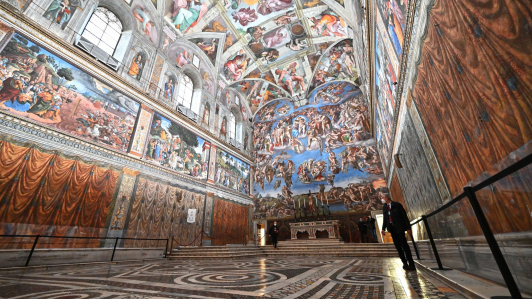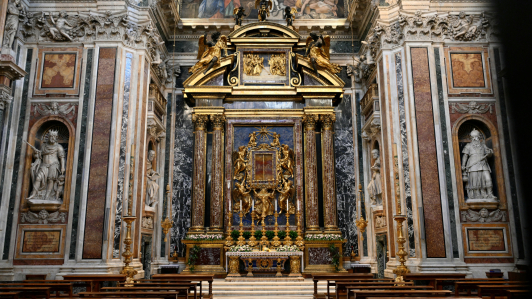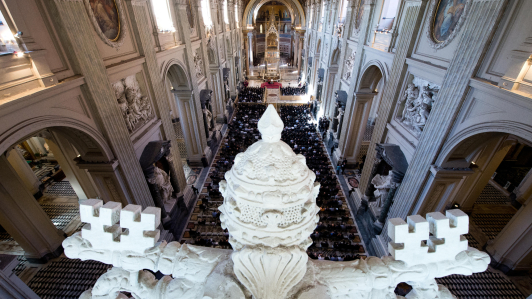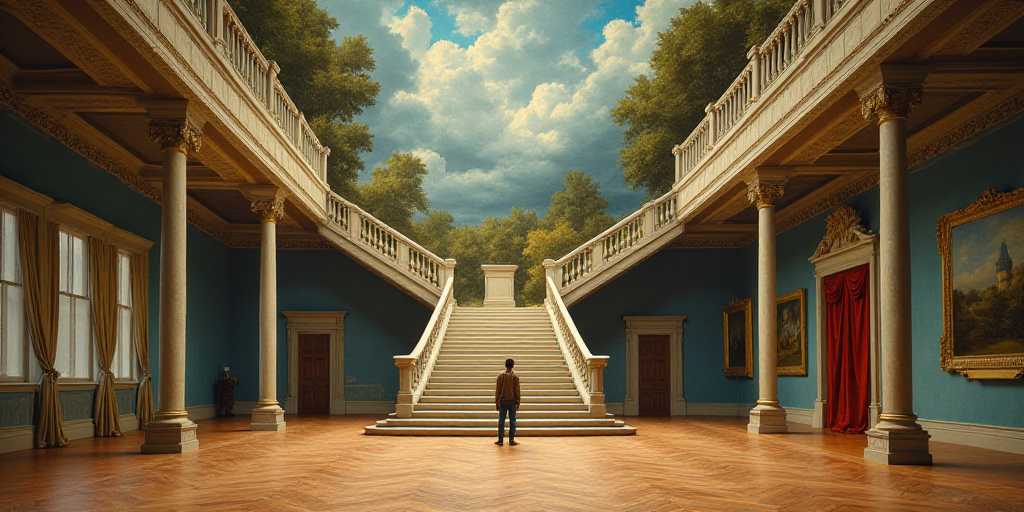The Conclave: A Historical Process for Selecting the Next Pope
The upcoming conclave, which will choose the successor to Pope Francis, follows a precise protocol developed over centuries in historically significant locations.
Main Locations Involved
St. Peter’s Basilica
This massive basilica, the largest in the world at 2.3 hectares, serves as the gathering place for cardinals to celebrate mass that initiates the papal selection process. After the service, elector cardinals march in procession to the Sistine Chapel, singing “Veni Creator.”
St. Peter’s Basilica is where the conclave officially ends with the proclamation of the new pope (“Habemus Papam!”) from the temple’s logia.
Architectural masterpieces by Bramante, Michelangelo, and Bernini were part of its construction between 1506 and 1626.
The Sistine Chapel
Built between 1477 and 1480, the Sistine Chapel is located on the right side of St. Peter’s Basilica, within the Apostolic Palace grounds. Commissioned by Pope Sixtus IV, it reportedly matches the dimensions of King Solomon’s legendary temple (40.5 meters long, 13.2 meters wide, and 20.7 meters high).

Foto: AFP
Famous for its frescoes by Perugino, Botticelli, and their students, the chapel’s highlight is Michelangelo’s breathtaking ceiling and ‘The Last Judgment’ on the wall opposite the entrance, behind the altar.
During the conclave, cardinals sit on cherry wood chairs with their names engraved, facing beige and burgundy-covered tables. Behind them is an urn with two lamb figures, where voting slips are placed.
In the center is a lectern with an open Gospel, where cardinals swear to maintain secrecy about what transpires.
The chapel has two stoves connected to the same chimney, providing the only indication of events inside. One stove burns voting slips and cardinals’ notes, while the other announces election results. Black smoke signals no agreement, and white smoke indicates a new pope has been chosen.
The Tearoom (Sala delle Lacrime)
At the back of the Sistine Chapel is a 9 square meter room, permanently closed to the public. Known as the “Tearoom,” it’s where new popes, accompanied by the Cardinal Camerlengo and liturgical ceremonies master, enter to traditionally weep at the enormity of their task and don their first white cassock, presented to the world.
Pauline Chapel

Capilla Paulina. Foto: AFP
Built in 1537 by Antonio da Sangallo the Younger at Pablo III’s request, this chapel is near the Sistine Chapel and St. Peter’s Basilica, where new popes pray a brief, personal, and silent prayer before their first public appearance.
Santa Marta Residence
Cardinal electors stay at the Santa Marta residence, constructed during Juan Pablo II’s papacy, right behind St. Peter’s Basilica. Previously, cardinals stayed in cramped and makeshift rooms within the Apostolic Palace.
The residence includes a chapel and provides each cardinal with a room and hotel-like amenities (meals and laundry).

Vista general de la Casa de Santa Marta, un edificio adyacente a la Basílica de San Pedro en la Ciudad del Vaticano.
Rooms typically have a single bed with a crucifix above the headboard. Most are suites with an adjacent room, equipped with a desk and a phone connected only to the internal network.
Room comfort varies, and distribution is by lottery.
Restrictions
A strict rule governs the conclave: once it begins, cardinals swear to maintain secrecy, facing excommunication for breaches. External contact via phones, internet, or newspapers is strictly prohibited, except in rare cases.
All cardinal locations are equipped with devices preventing phone and tablet use. While walking from Santa Marta to the Sistine Chapel, vehicle and pedestrian traffic is halted to avoid contact.
All personnel working in conclave locations, such as drivers, cooks, receptionists, cleaners, nurses, and doctors, also pledge silence in a solemn ceremony.






